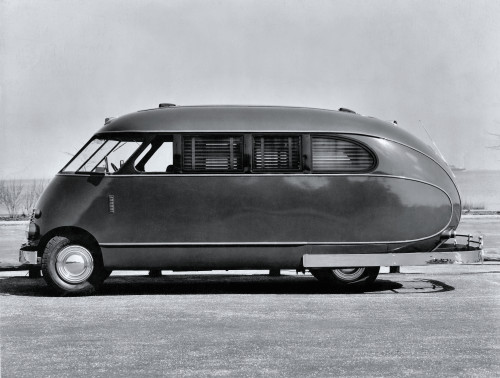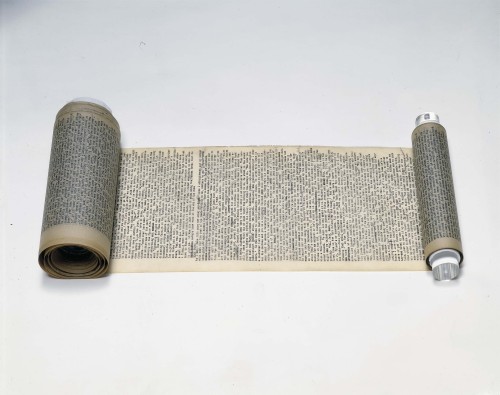Interstate highways and the demise of Main Street America have turned many modern-day road trips into boring long hauls from here to there.

A Streamlined House Car designed by the Brooks Stevens firm of Milwaukee, Wisconsin, circa 1936. From a Private Collection / Courtesy Harley-Davidson Museum
Those yearning for the good old days — ones that may have included station wagons and stops at roadside attractions — might want to motor on over to two new museum exhibits celebrating the rise of car culture and the transformation of the family vacation into an American ritual.
On Saturday, the Harley-Davidson Museum in Milwaukee, Wisconsin, rolled out “The American Road,” an exhibit that uses hundreds of artifacts and many personal stories to examine the evolution of the quintessential American road trip from its early beginnings in the 1930s to what it has come to represent in our culture today.
“The 1930s was the decade when you had a lot of infrastructure coming into place, including improved roads, full-service gas stations, early auto courts and other services, so we start there,” said Kristen Jones, manager of exhibits and curatorial at the Harley-Davidson Museum.
In the early 1930s, there were about 160,000 travel trailers on the road, Jones said, so on display in the exhibit’s first gallery is a 26-foot house car designed by American industrial designer (and Milwaukee native) Brooks Stevens. “It’s built on a truck chassis and has many of the comforts of home, including a galley kitchen, a bed, a dinette and a bathroom,” said Jones. A 4-foot salesman’s model of a mid-1930s trailer is also on display, complete with a hinged top that opens to display details such as an upholstered couch and a tiny fake plant.
The 1950s and ’60s were the “Golden Era” of the American road trip, Jones said, when many people had more vacation time, and more disposable income, to travel. “During this time you went west not in a covered wagon, but in your station wagon, and from this post-World War II era of travel we have everything from a 1962 Ford Country Squire station wagon with wood paneling to neon signs that became important beacons to entice travelers to pull off the highway and into the lots of motels, eateries and other attractions and businesses,” she said.
For years, a classic American road trip was along Route 66, the highway that originally ran from Chicago to Los Angeles and now ends in Santa Monica, California. The highway and its history is the focus of “Route 66: The Road and the Romance,” an exhibition that opened on June 8 at the Autry National Center of the American West in Los Angeles celebrating the decommissioned highway as both a road and a romantic notion.
“There are several Route 66 museums actually on the highway that look at the road’s history in that state or region, but we take a national view and look at factors that led to its creation and how it became a fixture in popular culture,” said Jeffrey Richardson, the Autry’s Gamble curator of western history, popular culture and firearms.
Among the 250 objects on display at the Autry are the oldest existing Route 66 shield, a handwritten page from John Steinbeck’s “The Grapes of Wrath” manuscript that introduces the term “Mother Road,” (one of the many nicknames for Route 66), a classic 1960 Corvette and the original 120-foot-long typewritten scroll of Jack Kerouac’s “On the Road.”
If you go:
“The American Road” at the Harley-Davidson Museum in Milwaukee, Wisconsin, runs through Sept. 1 and includes special meals in the restaurant and special road-trip themed events.
“Route 66: The Road and the Romance” will be at the Autry National Center of the American West through Jan. 4, 2015, and also includes seminars, tours, family activities, films and more.
(My story about museum exhibits celebrating road trips first appeared on NBC News Travel)
